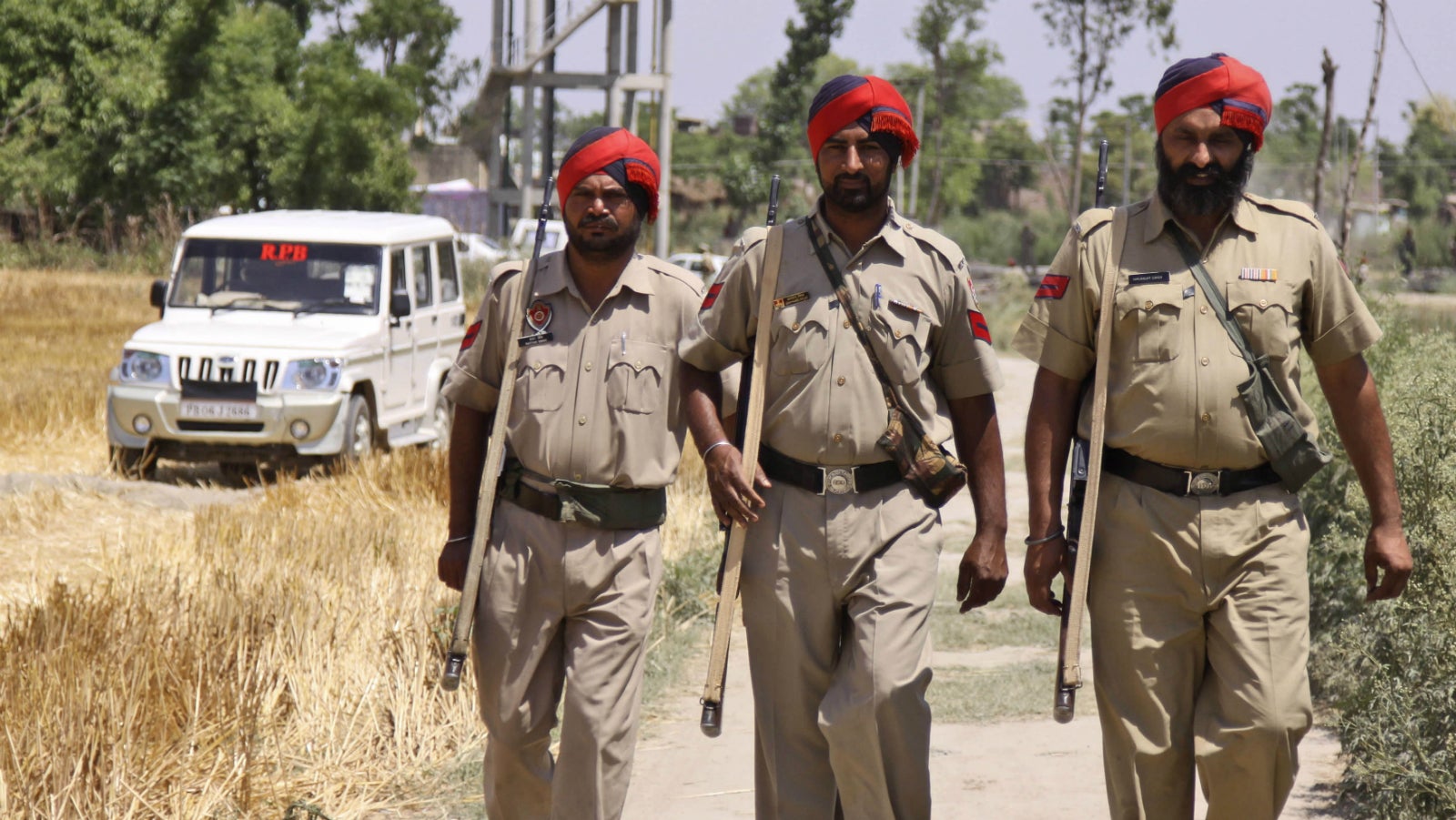Everything you need to know about Gurdaspur—the epicentre of today’s terrorist attacks
Today, India woke up to the news of an ongoing gun battle in Punjab’s Gurdaspur district.


Today, India woke up to the news of an ongoing gun battle in Punjab’s Gurdaspur district.
On the morning of July 27, suspected militants in army uniforms attacked a police station and fired at a bus in the Gurdaspur district. Six people have been killed and ten others wounded, according to TV reports. A police officer has told the Associated Press that the attackers are believed to have come from Indian-administered Kashmir.
While the northern state of Punjab saw horrific militancy in the 1980s and 1990s, Gurdaspur in particular has been a target of several such attacks, perhaps due to its proximity to the border.
In 1988, the district was among the three places, including Hoshiarpur and Patiala, where bombs exploded, killing 120 people. A Khalistani armed organisation, Babbar Khalsa, was reportedly behind the attack.
Punjab has been the target of terrorist attacks since the early 1980s, largely by Sikh militant groups demanding an independent homeland, Khalistan. According to data from the South Asia Terrorism Portal, 11,783 civilians and 1,750 security personnel were killed between 1981 and July 2015, due to terrorist attacks in the state.
The Partition
Gurdaspur is the northern-most district of Punjab, and shares a common boundary with India’s neighbour in the north west.
The district has a total area of 2,610 sq km and consists of 11 blocks—Gurdaspur, Dhariwal, Kalanaur, Dorangla, Kahnuwan, Dinanagar, Batala, Qadian, Shri Hargobindpur, Fatehgar Churian and Dera Baba Nanak.
Gurdaspur was founded at the beginning of the 17th century by Guriya Ji, a Brahmin from the village of Paniar, situated five miles north of Gurdaspur. He bought the land for Gurdaspur from the Jat community of Sangi gotra. Guriya Ji had two sons—Nawal Rai and Pala Ji. The descendants of Nawal Rai settled in Gurdaspur.
Prior to India’s Partition, the future of the Gurdaspur district could not be decided for a long time, primarily because it was predominantly inhabited by Muslims.
Finally, under the Radcliffe Award, only one tehsil or administrative block—Shakargarh—was transferred to Pakistan, and the rest of the district remained with India.
Many Muslims from the Gurdaspur district migrated to Pakistan; Sikhs and Hindus crossed the border and came to India.
Gurudwara Darbar Sahib, Kartarpur—one of the most famous Sikh temples, where Sikh guru Nanak Dev spent his last days—went to Pakistan.
According to the 2011 census, the population of Gurdaspur district stands at roughly 2.29 million. That’s almost 8.28% of Punjab’s population. It has a literacy rate (pdf) of 85.9% as compared to Punjab’s 81.5%.